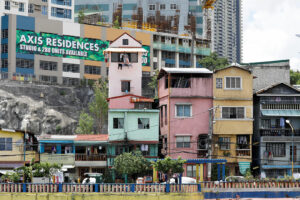Over the past decade, condominiums have grown in popularity among Filipinos seeking new homes partly because of their versatility as a residential property and as a potential source of income. As more Filipinos move to Greater Manila and as developers build more projects vertically, the condominium market presents golden opportunities for developers and investors alike.
According to the Bangko Sentral ng Pilipinas (BSP), while real estate prices of various types of new housing units in the Philippines contracted by 3.6% in the fourth quarter of 2023, the market did rise by 6.5% year on year. Although condominium prices also declined by 8.6% in the fourth quarter of 2023, it saw a massive increase of 15.6% in the said quarter and saw a modest 4.1% growth overall for the whole year.
There is also an indication of the steady preference of Filipinos for condominiums as residential property. Data from the BSP suggests that 42.6% of Filipinos utilized their residential real estate loans (RREL) to purchase condominiums, the same percentage as those who bought single houses. Additionally, 14.7% opted for townhouses, while duplexes accounted for a meager 0.1% of the transactions.
Condominiums as second homes near tourist destinations are becoming a trend among homebuyers too. Real estate agency Santos Knight Frank mentions that a growing number of Filipinos are showing heightened interest in acquiring leisure condos outside of Metro Manila with the favored locations for these second homes including areas like Tagaytay, Pampanga, and Batangas.
Colliers’ Property Market Update for 2024 shows that the condominium markets in urban centers in Laguna, Cebu, and Cavite are improving as well with selling rates of P129,700 per square meter (sq.m.), P150,300/sq.m., and P150,400/sq.m., respectively. The same report says that the compound annual growth rate of condominium prices in those areas grew by 11.1% in Laguna, 6.9% in Cebu, and 12.4% in Cavite.
Additionally, Colliers’ Q1 2024 Metro Manila Residential Report suggests that close to 3,000 condo units were purchased in the region’s pre-selling market. This growth in demand was fueled by buyers from the lower and upper mid-income brackets, who collectively comprised nearly half of the total units sold during this timeframe, in areas like Mandaluyong, Quezon City, and Alabang-Las Piñas.
Meanwhile, the same report says that the number of pre-selling condominium launches in Q1 2024 totaled 2,600 units, a 59% decrease compared to the same period in the previous year. A potential reason for this cautiousness by developers may be due to “elevated mortgage rates, continued increase in prices of construction materials, surging land values in Metro Manila, and lengthened remaining inventory life.”
The Philippine condominium market is still a cornerstone for urban living amongst Filipinos looking to move to the metro. As the market adapts to evolving consumer demands and market conditions, developers innovate and expand their portfolios to accommodate more Filipinos and investors. The condominium’s role in Metro Manila as a symbol of urban life is set to endure and shape the future landscape of Philippine real estate. — Jomarc Angelo M. Corpuz





